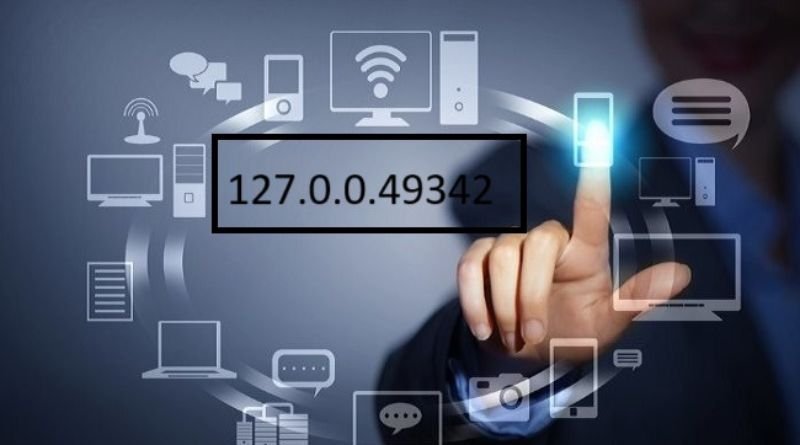The world of networking and technology is vast, and while it may seem intimidating at times, certain concepts like 127.0.0.1:49342 play a crucial role in the communication and functionality of computers. If you’ve ever seen this number in your browser’s address bar or in logs, you might be wondering what it actually means. Let’s break it down and explore the significance of 127.0.0.1 and 49342 to give you a clearer understanding of how they work together.
Table of Contents
What is 127.0.0.1?
The IP address 127.0.0.1 is known as the “loopback address” or localhost. It is a special IP address that a computer uses to refer to itself. Essentially, this address is used for testing purposes, allowing a device to send data to itself as if it were communicating with another device over a network.
- 127.0.0.1 is the most common loopback address.
- Any communication sent to this address stays within the device and does not travel across any physical network.
When you type 127.0.0.1 into your web browser, you’re not actually connecting to a remote server but rather to your own device. It’s often used by developers to test web applications, servers, or services on their own system before deploying them to a live environment.
What is Port Number 49342?
The number 49342 is a port number. In computer networking, port numbers are used to identify specific processes or services running on a device. While IP addresses point to a device, port numbers identify specific applications or services running on that device.
Port numbers can range from 0 to 65535, and they are divided into three main categories:
- Well-Known Ports (0-1023): These are reserved for common protocols such as HTTP (port 80), FTP (port 21), and HTTPS (port 443).
- Registered Ports (1024-49151): These ports are used by applications that are not as common as the ones listed above but are still registered with the Internet Assigned Numbers Authority (IANA).
- Dynamic or Private Ports (49152-65535): These ports are typically used for ephemeral (temporary) connections. This is where 49342 falls.
In your case, 49342 is an ephemeral port, which means it could be used by any application or service on your device for a temporary period. These port numbers are assigned dynamically when a program or service requests them.
How Does 127.0.0.1:49342 Work?
When combined as 127.0.0.1:49342, the address refers to a specific service running on your local device (localhost) that is using port 49342. This could be a web server, a database, or any other network service that is configured to listen for requests on this port.
For example:
- A developer might run a web application locally on 127.0.0.1 (localhost) during the development process, using port 49342 to handle requests to the application.
- You might also see 127.0.0.1:49342 in error logs, which means there was an issue with the local service or application running on that port.
Common Use Cases for 127.0.0.1 and Port Numbers
1. Local Development and Testing:
Developers often use 127.0.0.1:49342 or other loopback addresses to test applications on their local machines. This is especially useful for debugging or developing web services without exposing them to the internet.
2. Running Local Servers:
If you are running a local server (e.g., a web server or a database server), it will usually bind to a specific port on 127.0.0.1. Each service or application on the machine will use different port numbers to avoid conflicts.
3. Testing and Troubleshooting:
The loopback address allows network administrators and developers to test network connectivity without the need for a physical network. If an issue arises, testing the service locally (on 127.0.0.1) can help isolate whether the problem is network-related or with the application itself.
4. Security and Firewalls:
The loopback interface is often used for security purposes. Services running on 127.0.0.1 typically aren’t exposed to the broader internet, making them less vulnerable to remote attacks. This is one reason many applications will bind to 127.0.0.1 instead of external IP addresses.
Why Would You See 127.0.0.1:49342?
Seeing 127.0.0.1:49342 might occur in several contexts:
- Localhost Development: If you’re developing an application or running a local server (like a testing database, API, or web server), you might use 127.0.0.1 with a port number such as 49342 to specify the local address and port for communication.
- Server Logs: When troubleshooting issues with a locally hosted service or application, you may encounter 127.0.0.1:49342 in logs, indicating that a specific process or service is running or failed on that port.
- Network Configuration: In some cases, software might use a dynamically assigned port like 49342 for communication between processes on your machine. This is often part of the application’s configuration, which chooses an available port in the dynamic range.
FAQs
1. What does 127.0.0.1 refer to?
127.0.0.1 is the loopback address in networking, also known as localhost. It is used to communicate with the same device or machine over a network, but it doesn’t leave the computer. It’s commonly used for testing and debugging.
2. Why is port 49342 important?
Port 49342 is part of the dynamic range (49152-65535), which means it is used by applications and services temporarily. It’s often assigned to processes running on a machine for specific purposes, like testing or communication between applications.
3. How do I use 127.0.0.1:49342 in my browser?
To use 127.0.0.1:49342, you would enter this address in your web browser’s URL bar if a local server or web application is running on that address and port. For instance, a development server might be running on that port during testing.
4. Can I change the port number from 49342 to something else?
Yes, you can change the port number in your application’s configuration. If you’re running a server locally, you can often specify the port in the settings. Ensure the port you choose is not already in use.
5. Can 127.0.0.1 be accessed from another device on the network?
No, 127.0.0.1 is specific to your own device. If you want to allow other devices on your network to access your services, you’ll need to use an external IP address or configure your machine to accept inbound connections.
Conclusion
127.0.0.1:49342 represents a combination of the loopback address (localhost) and a dynamically assigned port, often used for local development, testing, and internal communication between services. Understanding how these elements work together is essential for developers, network administrators, and tech enthusiasts. If you’re working with local servers or troubleshooting network issues, being familiar with this concept will help you navigate and resolve challenges effectively.
If you encounter 127.0.0.1:49342 in logs or your web browser, it typically means you’re dealing with a local process or application running on your machine, and it can be easily debugged or tested without affecting external networks.






